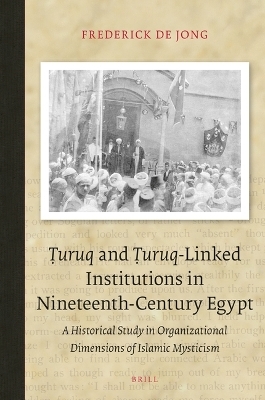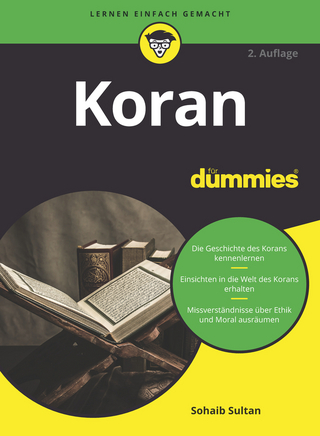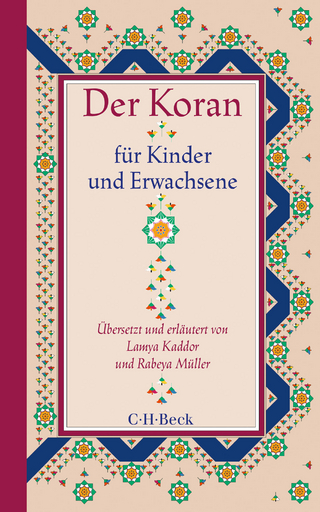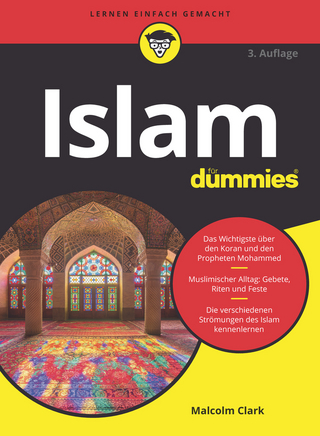
Ṭuruq and Ṭuruq-Linked Institutions in Nineteenth-Century Egypt
Brill (Verlag)
978-90-04-44909-1 (ISBN)
Ṭuruq and ṭuruq-linked institutions by Frederick De Jong was first published in 1978. It is largely based on research in public and private archives in Cairo, and on published materials in limited circulation. This study became highly influential in its field. De Jong describes the development of the administration and organization of the ṭuruq and ṭuruq-linked institutions (takāyā, zawāyā, and shrines) under the shaykhs of the Bakrī family in nineteenth- and early twentieth-century Egypt. Central to this administration is the principle of right of qadam, meaning the exclusive right of a ṭarīqa to proselytize and to appear in public in a particular area, if it could be proved that it had been the first to do so.
Frederick de Jong Ph.D. (1977), Leiden University. Chair of Islamic Languages and Cultures in Utrecht University (1984-2009). Major publications concern sufi orders, Muslim minorities in South-Eastern Europe and in Turkey, in addition to Uyghur language and culture.
Preface
Acknowledgements
List of Maps and Plates
Note on Spelling and Transliteration
Introduction
1 The Emergence and Institutionalization of Central Authority over the Ṭuruq and Ṭuruq-Linked Institutions
1 Al-Bakriyya and Its Leaders
2 The Niqābat al-As̲h̲rāf
3 The Arbāb al-Sajājīd
4 The Ṭuruq
5 The Formalization of al-Bakrī’s Authority and Muḥammad ʿAlī’s Policy
6 The Shrine- and Takīya-Based Ṭuruq
7 Ṭuruq without Material Assets
8 The Takāyā and Zawāyā
9 The Appointment of Muḥammad al-Bakrī as Naqīb al-As̲h̲rāf and Its Implications
10 Demarcation of Authority: The Agreement with al-Azhar
11 The Early Phase of the Ṭuruq Administration
12 Summary
2 The Ṭuruq Realm, the Principle of Right of Qadam, the Nature and Functioning of the Ṭuruq Administration
1 The Genesis of the Principle of Right of Qadam
2 Al-Bakrī’s Authority over the Ṭuruq and the Principle of Right of Qadam
3 The Ṭuruq Administration and the Government
4 Conflicts about Right of Qadam and Their Resolution
5 The As̲h̲rāf as Ṭarīqa Officials
6 Conflicts Not Related to Qadam
7 The Mawālid and the Ṭuruq
8 The Shrines
9 The Mawlid al-Nabī Celebrations
10 Additional Mawālid and Other Celebrations Organized and Supervised by al-Bakrī
11 The Processions of the Kiswa, the Maḥmal and the Laylat al-Ruʾya
12 The Ṭuruq Involved
13 Al-Bakrī’s Administration and the Ṭakāyā
14 Al-Bakrī’s Administration, the Cairene Shrines and Their Intendants
15 The Nature and Scope of al-Bakrī’s Authority
16 Demands for Reforms
17 Summary
3 The Crisis of Authority
1 The Circular of 1881, Its Contents, Implications and Consequences
2 The Inadequate Maintenance of Rights of Qadam
3 The New Ṭuruq, Their Leaders, Their Spread, Their Recognition
4 Secessionist Ṭuruq
5 The Changing Area of Authority and the Decline of Its Legitimacy
6 The ʿUrābī Insurrection and Ṭarīqa Involvement
7 Summary
4 The Promulgation of the Regulations for the Ṭuruq, Their History and Contents
1 Muḥammad Tawfīq al-Bakrī and the Early Re-assertion of Authority
2 The Regulations of 1895
3 The Amended Regulations of 1903
4 Ṭuruq without Official Status
5 The Internal Regulations of 1905
6 The Reformist Calls for Iṣlāḥ of the Ṭuruq
7 Opposition to and Acceptance of the Internal Regulations
8 Status Changes of the Ṭuruq
9 The Political Activities of Muḥammad Tawfiq al-Bakrī
10 Summary
Epilogue
Appendix 1: Translation of the Firmān Issued by Muḥammad ʿAlī, Viceroy of Egypt, Investing Muḥammad Efendī al-Bakrī with Authority over the Ṭuruq and Ṭuruq-Linked Institutions
Appendix 2: Translation of the Maḥdar Setting out the Demarcation of the Areas of Authority of the S̲h̲ayk̲h̲ al-Sajjāda al-Bakriyya, Muḥammad Efendī al-Bakrī, and the S̲h̲ayk̲h̲ al-Azhar, Ibrāhīm al-Bayjūrī
Appendix 3: Translation of a Circular Issued by the S̲h̲ayk̲h̲ al-Bakrī to All the Chiefs of the Religious Sects
Appendix 4: Translation of the Regulations for the Ṭuruq (Lāʾiḥat al-Ṭuruq al-Ṣūfiyya) of 1895
Appendix 5: Translation of the Amended Regulations for the Ṭuruq (Lāʾiḥat al-Ṭuruq al-Ṣūfiyya) of 1903
Appendix 6: Translation of the Internal Regulations for the Ṭuruq (al-Lāʾiḥat al-Dāk̲h̲iliyya li-l-Ṭuruq al-Ṣūfiyya) of 1905
Appendix 7a: The Genealogy of Muḥammad Abū l-Suʿūd al-Bakrī
Appendix 7b: Descendants of Muḥammad Abū l-Suʿūd al-Bakrī Down to the Early 20th Century
Appendix 8: Names of Persons Who Held the Supreme Authority Position over the Bakrī Family and the Bakriyya Order in Ottoman Egypt
Appendix 9: Appointees to the Niqābat al-As̲h̲rāf from ca. 1750 until 1911
Bibliography
Index of Arabic and Turkish Terms
Index of Personal Names
Index of Place Names
General Index
| Erscheinungsdatum | 19.07.2021 |
|---|---|
| Reihe/Serie | Brill Classics in Islam ; 9 |
| Verlagsort | Leiden |
| Sprache | englisch |
| Maße | 155 x 235 mm |
| Gewicht | 604 g |
| Themenwelt | Geisteswissenschaften ► Religion / Theologie ► Islam |
| Sozialwissenschaften | |
| ISBN-10 | 90-04-44909-4 / 9004449094 |
| ISBN-13 | 978-90-04-44909-1 / 9789004449091 |
| Zustand | Neuware |
| Haben Sie eine Frage zum Produkt? |
aus dem Bereich


